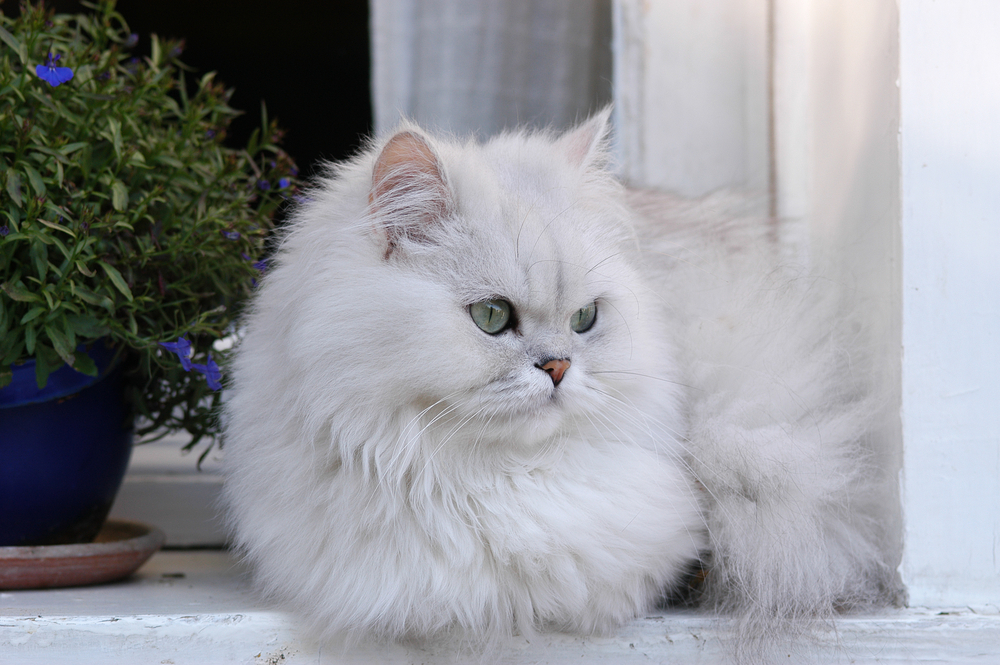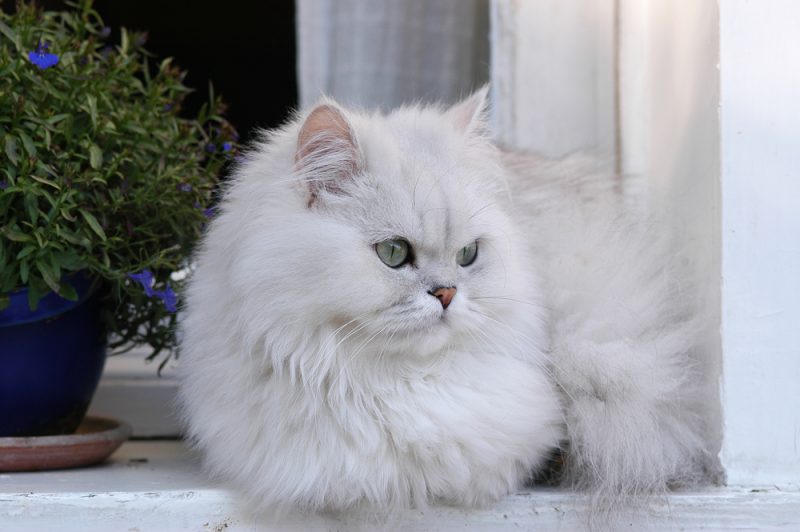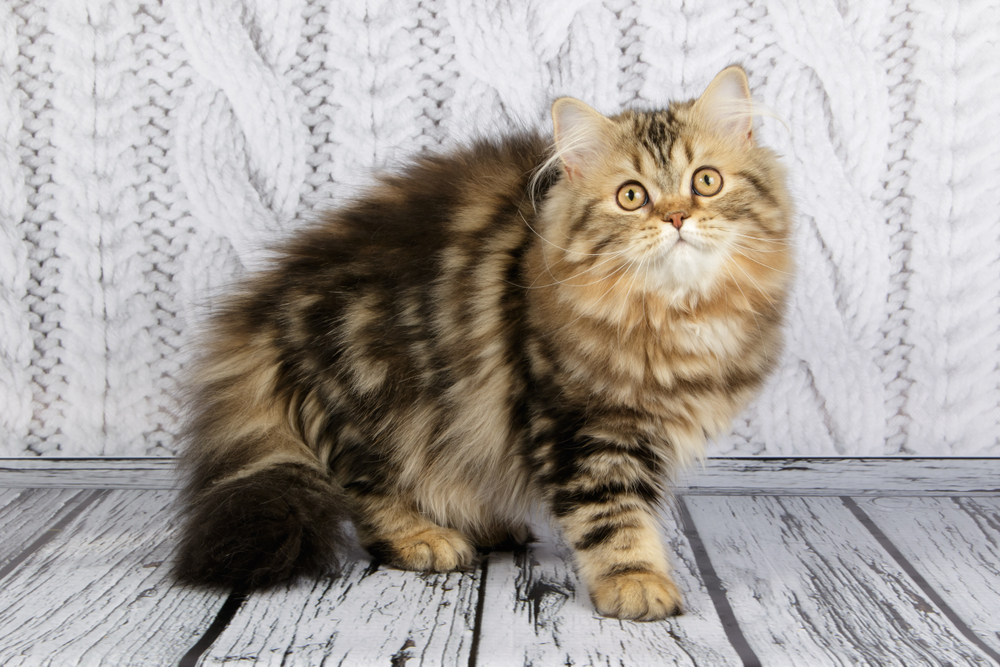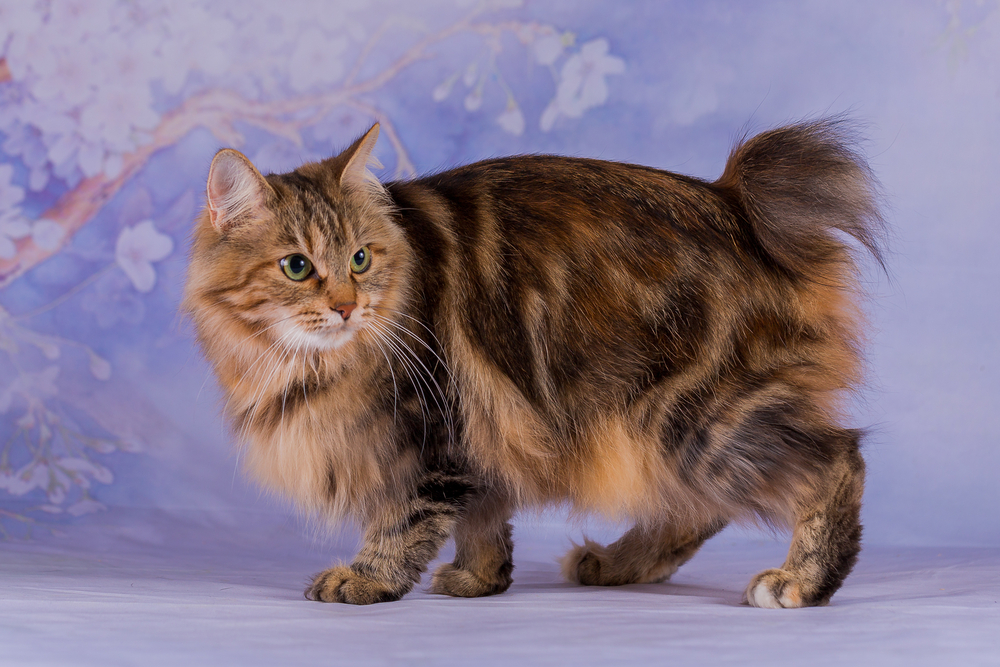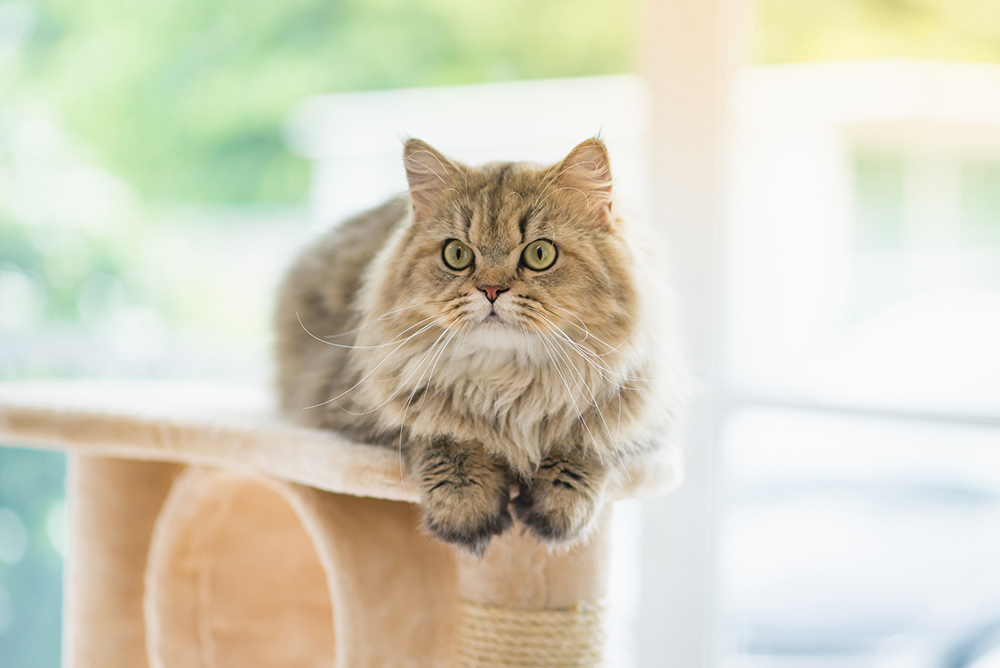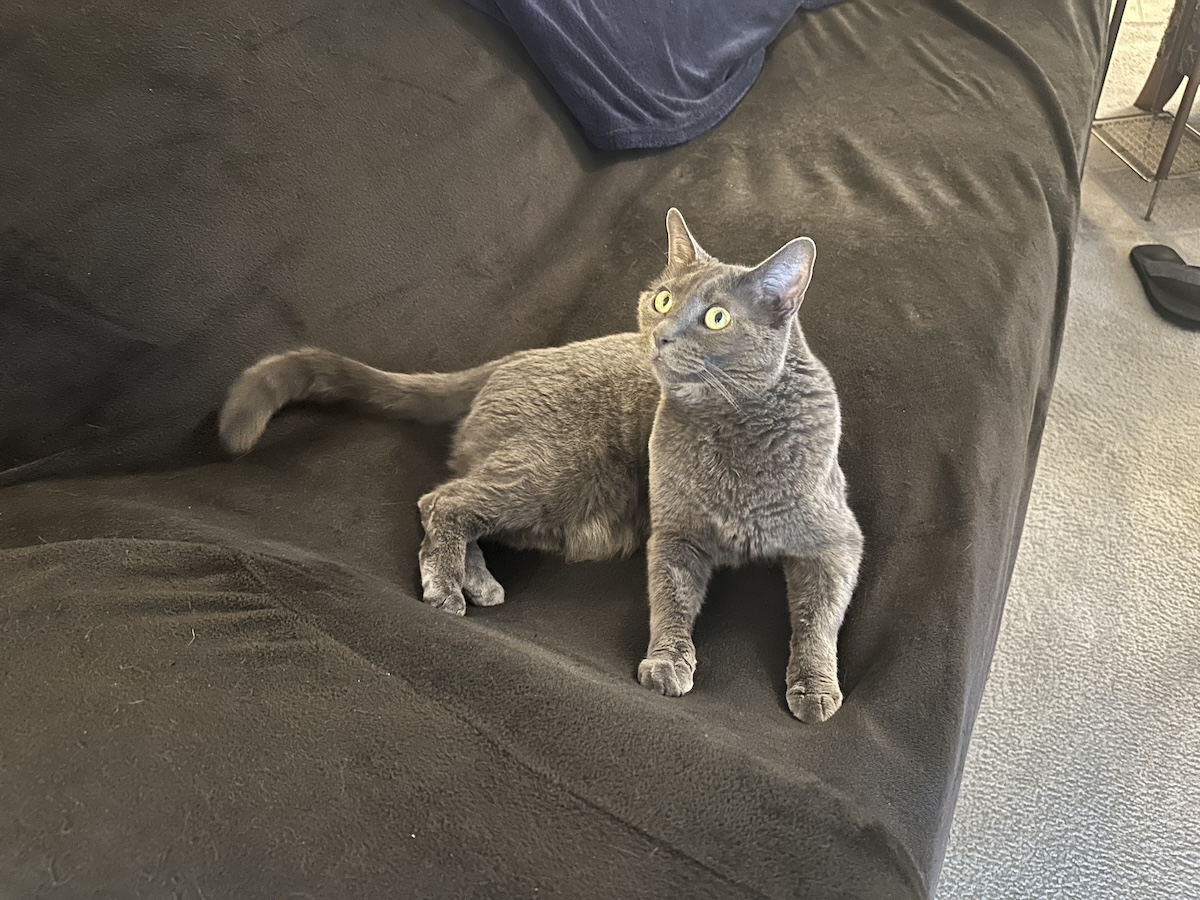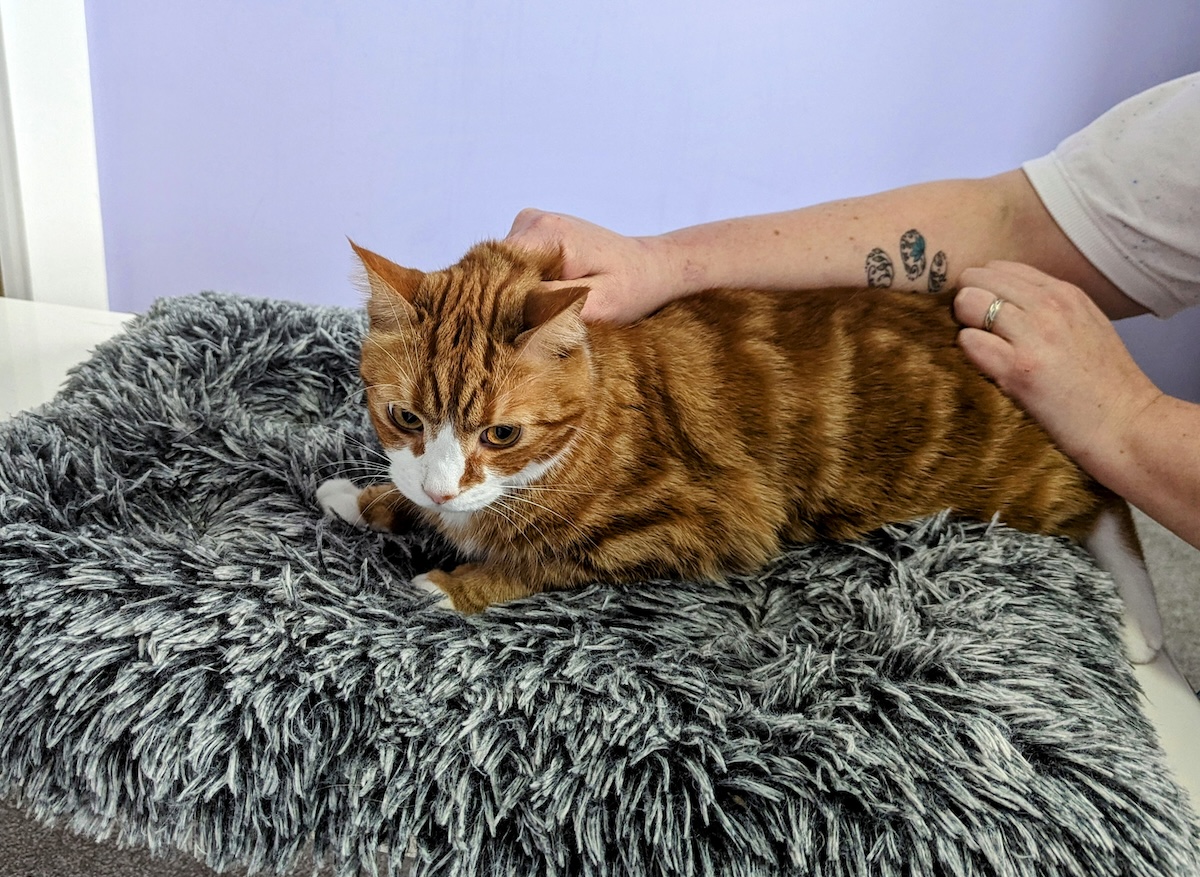Click to Skip Ahead
As gorgeous as they are affectionate, the ever-stunning Persian cat becomes even more so when covered in a luxurious silver coat. Silver Persians have been delighting pet lovers for over a century, giving enthusiastic owners one of the most attractive felines and breeding experts an undeniably captivating variety to draw more interest to the breed.
From their sparkling coats to their adoring personalities, Silver Persians are magnificent inside and out. Let’s look at the traits and lifestyle of the Silver Persian cat and discover why many breed experts enthusiastically agree that these are the “Cadillac of cats.”
Breed Overview
Height:
8–10 inches
Weight:
7–12 pounds
Lifespan:
11–15 years
Colors:
Chinchilla silver, shaded silver, blue Chinchilla silver, blue shaded silver
Suitable for:
Families with children, laid-back owners that like to relax with their cats, owners that don’t mind the grooming demands
Temperament:
Playful, loving, relaxed, quiet, intelligent, friendly
The Silver Persian cat is a color variety of the Persian breed. The long-haired cat takes on a shimmering silver appearance, which many regard as the most dazzling and regal of all Persian coats. There are two varieties, Chinchilla Silvers and Shaded Silvers, which share similar origins and general traits.
Silver Persians achieve their classic elegance through stunning points of contrast. The round eyes stand out in remarkable shades of green and blue-green, while a brick-red nose sits below. Black outlines emphasize these and the lips, making the already mesmerizing eyes stand out even further and sharply defining every subtle change in facial expression.

Silver Persian Breed Characteristics
The Earliest Records of Silver Persians in History
While the Persian breed dates to the 1600s, silver-coated cats didn’t garner significant recognition until the 1800s. The Chinchilla Silver Persian cats began with Chinnie, a female born in England in 1882. Chinnie’s unique coloration captured her owner’s interest, and she soon mated with another Silver with tabby markings named Fluffy I.
Sadly, Fluffy I and many of Chinnie’s offspring met untimely ends due to various accidents, leaving only her first female, Beauty. Beauty would go on to have several litters. In 1890, her second mating produced Silver Lambkin, a legendary champion and the first of the Chinchilla Silvers.
Silver Lambkin sired numerous cats that would significantly impact the breed’s development, and many modern silver cats can trace their lineages to him and his relatives.
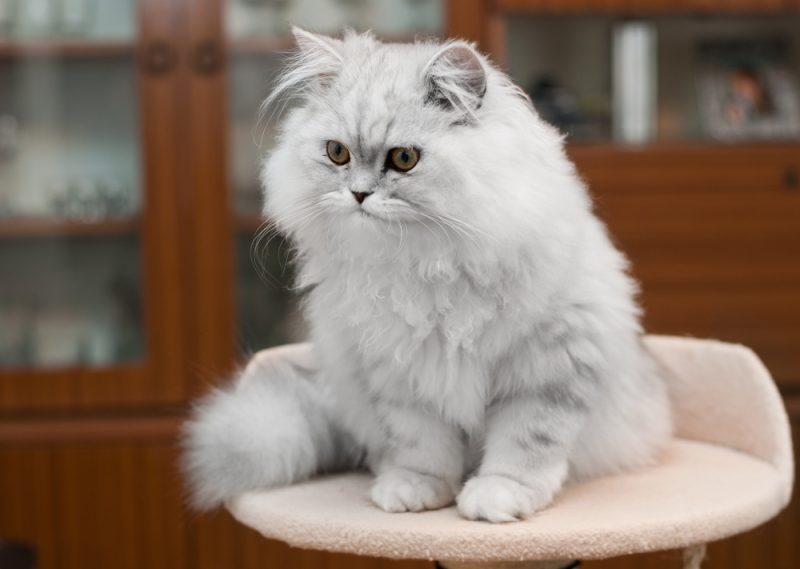
How Silver Persian Cats Gained Popularity
Silver Lambkin and his offspring, notably Lord Argent and Champion Lord Southampton, were highly influential, appearing in the pedigrees of many modern Silvers. At this time, crossings with blues, Silver Tabbies, and other varieties found their way into the silver lines.
Spreading Silver Lambkin’s influence, much of Lord Southampton’s offspring moved across the ocean to develop silver lines in the U.S. by the turn of the century. Lord Argent also came to America in 1901 with his owner and founder of the Silver Society, Mrs. Florence Champion, to establish the Argent line. The Silver Persian’s popularity quickly took off, so much so that Silver Lambkin’s death in 1906 was significant news on both sides of the pond.
Formal Recognition of Silver Persian Cats
Following Chinnie’s birth in 1882, interest in Silver Persians grew, and the offshoot received its first standalone class at the Crystal Palace Show in 1894. Although detailed records are sparse, many believe Silvers earned recognition upon the Cat Fanciers’ Association’s founding in 1906.
Over the years, confusion and lack of agreement over definitions have caused Silvers to move in and out of classes of various color-type combinations. Silver Tabby, Smoke, Cameo, Tortoiseshell, and other Persians mingled in shared divisions as judges struggled to consistently and logically define the differences.
Smokes and Cameos were in the Shaded Division with Silvers until 1965 when Smokes got their separate division. In 1977, Golden Persian cats (a recessive variation of silver that produces golden tipping) gained CFA recognition and joined the Shaded Division. Finally, Silvers and Goldens broke from the rest in the mid-1990s, giving us today’s categorizations.
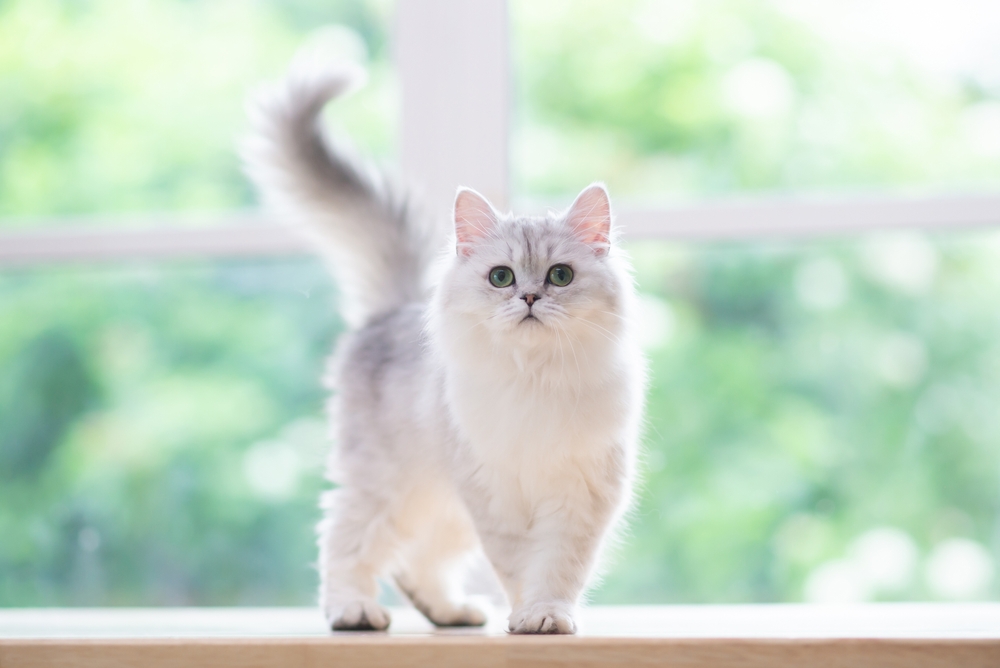

Top 2 Unique Facts About Silver Persian Cats
1. Silver Persian Cats Are Tricky to Identify
- Chinchilla Silver: Chinchillas have a white undercoat and a topcoat featuring subtle black tipping on the back, flanks, head, and tail for a light silver-white appearance
- Shaded Silver: Guard hairs have more shading on the tips, clearly separating shaded sections from white areas on the ruff, face, and inside the body and making the cat much darker than the Chinchilla
The distinction between the different colors and classifications has been up for debate since the earliest Silver Persians. Many people, including judges, can’t decide where a Chinchilla ends and a Shaded begins. The confusion continues today, as some Silver Persians earn a “neither/nor” designation, meaning they don’t clearly fit either mold. Though they’re difficult to interpret, purists say cats should be distinguishable as a Chinchilla or Shaded from a distance.
2. Silver Persians Look Much Different as Kittens
A newborn Silver Persian kitten can catch a first-time owner off-guard. While most people know the eyes take a few weeks to take on their natural color, the coat pattern can leave many scratching their heads.
The darker coat and markings are the first features you might notice with a Silver Persian kitten. If your cat is a Chinchilla Silver, they’re often born with a Mackerel Tabby pattern featuring slender stripes and spots.
Shaded Silvers usually have the blotchy pattern of a Classic Tabby. Though the patterns are well-defined on kittens, the coat lightens, and the markings disappear after around 10 weeks as the hair grows out.
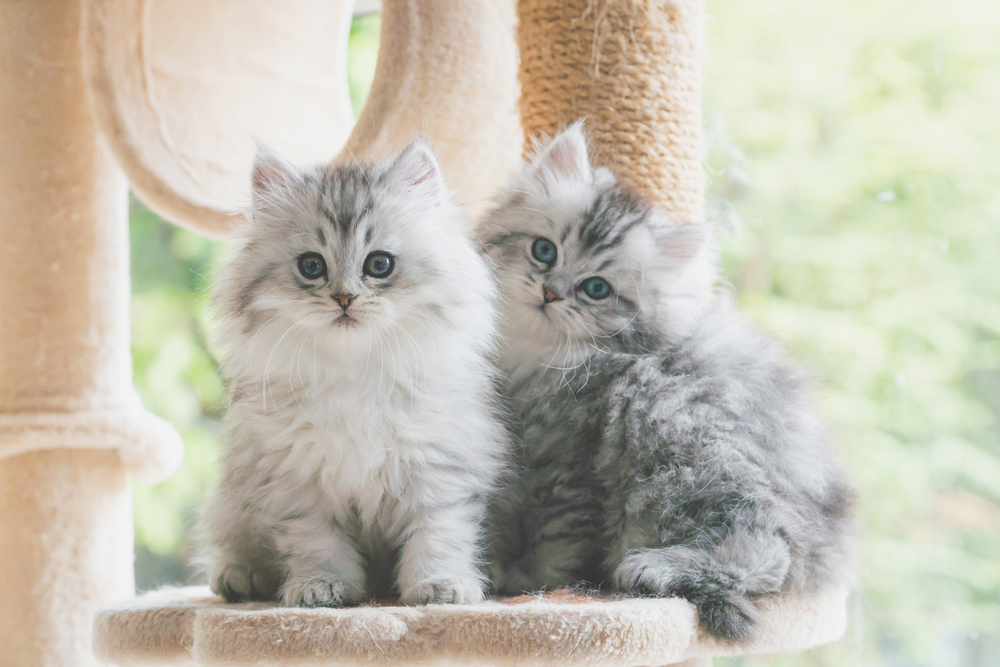

Does a Silver Persian Cat Make a Good Pet?
Persians have some of the most pleasant personalities of any breed, and the silver-coated variety is no exception. Though sometimes aloof with strangers, they’re easy to get along with and rarely get too loud or temperamental.
Silvers have a reputation for being more intelligent and active than other Persians, but they’re still more relaxed than the average cat. In most cases, they’re happiest lounging with their favorite person. Many owners even consider them similar to little dogs with their tendency to shadow their owners.
Grooming is usually the most demanding part of owning a Silver. A Persian is a high-maintenance shedder requiring daily grooming. Getting them comfortable with the routine at a young age is crucial. Despite the added challenges, tending to a Chinchilla Persian is also extra-rewarding, as the groomed-out coat creates a gorgeous cloud of delicate silver-tipped hair.

Conclusion
Regal, exquisite, ethereal. You can pick any of the most common descriptors, and they all point to the Silver Persian being almost too good to be true. For over a century, Chinchilla and Shaded Silvers have brought their unique appeal to the cat fancy, garnering much debate over the years and plenty of appreciation from avid fans worldwide. With a radiant beauty and an enchanting personality to match, Silver Persians make a delightful addition to nearly any household.
Related Read:
Featured Image Credit: ZAHRA22, Shutterstock

